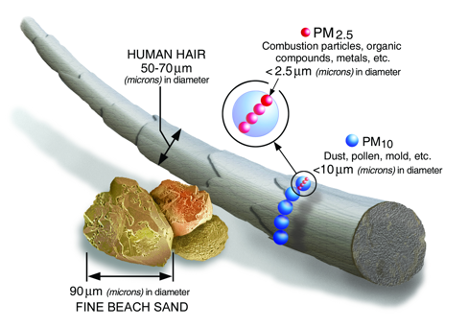
In this Expert Exchange webinar, our panelists identify conditions that create poor indoor air quality and explain how to prevent or fix them to ensure the indoor air we breathe is as fresh and healthy as possible. Allison Bailes gives a subject-overview presentation before guests answer questions collected from industry pros. Topics covered include the role of humidity in indoor air contamination, crawlspace dehumidification and pressurization, DIY filtration, ERV/HRV systems integration, the problems with oversized HVAC equipment, home data collection, and the importance of low-level CO2 monitoring, among others.
The panelists
 |
Allison Bailes III, PhD is a speaker, writer, building-science consultant, and the founder of Energy Vanguard in Decatur, Georgia. He has a doctorate in physics and writes the Energy Vanguard Blog. His book, A House Needs to Breathe . . . Or Does It? will be available in fall 2022. | |
 |
Monica Rokicki is founder and CEO of Better Building Works whose mission is to help clients implement intentional, cost-effective strategies for context-driven, high-performance new construction, development projects, and improvement of existing buildings and campuses. She holds various building performance certifications, including LEED AP BD+C and EBO+M, BPI, and HERS. | |
 |
Nikki Krueger is director of marketing and business development for Santa Fe Dehumidifiers. She has been in the indoor air quality industry for over 20 years. She is a RESNET-certified home energy rater, a member of the ACCA Manual Low Load Homes (LLH) Advisory Committee, and member of the Resource Efficiency and Indoor Environment Quality task group for the 2024 NGBS Standards update. | |
 |
Cramer Silkworth is a licensed engineer providing Passive House consulting and mechanical system design. In 2012 he founded Baukraft Engineering to provide energy efficiency consulting for residential and small-scale commercial projects in NYC and the Hudson Valley and is a PHI-trained Passive House Trainer. | |
 |
Jon Harrod is owner of Snug Planet, a home-performance company based in Ithaca, NY. He is a BPI-certified Building Analyst and Efficiency First board member. He is a regular contributor to Green Building Advisor and his articles on high-performance showerheads, construction waste management, and the role of home performance in climate change resilience have appeared in Home Energy magazine. |
Weekly Newsletter
Get building science and energy efficiency advice, plus special offers, in your inbox.














8 Comments
What a great group of experts!
I’m so pleased with the turnout, Charlie. Hope you can attend!
"You can't manage what you don't measure." I'm sure the panelists can make recommendations for IAQ testing equipment when doing a field analysis, bit what about equipment for homeowners who need to frequently monitor IAQ after initial testing (and/or remediation)?
Why don't you have anyone representing the biomedical/public health side of things? There's so much active research here on what does/doesn't matter with IAQ that hasn't begun to creep in to regulations or building science. (With today's SCOTUS ruling, the public will need even more help making informed choices about risk for long into the future.) Seems like these experts are not actually leaders in identifying or prioritizing the health risks---they assume the risks are known and have expertise in mitigating them, but smart builders should be listening to the researchers investigating the risks themselves. At the very least, it would be good to get experts from countries with more stringent regulations on IAQ (e.g., Japan and S Korea), so we can anticipate what's in store for performance homes in the U.S. In my field of science, it's usually a bad sign for diversity of thought when panelists are all from the same country.
I agree with your question but not this form of critique.
What IAQ research are you referring to?
The EPA creates a report on residential IAQ research ... in the US, obviously. The link to latest report is below. The gist of these reports is: the experimental research is beginning to affirm the modelling research, but the experimental research that was expecting effects on occupant health is moderate to weak to non-existent. For example, of the research sampled:
"Nineteen out of 20 residential intervention studies also found statistically significant associations between the introduction and use of air cleaners (and typically reduced indoor
exposures) and at least one measure of health outcomes or marker of health outcomes. However, most of the health improvements were relatively modest in magnitude and, when multiple outcomes were measured, typically only a fraction of health outcomes or biomarkers of health outcomes were impacted."
In other words: all this new tech (that HVAC / IAQ folks luv to sell) do get lower PMs, but that doesn't necessarily mean a person in the home stops sneezing from pollen / dust / dander. That makes sense to me. As an extreme example: If a person is allergic to cats, none of this IAQ tech will stop allergic reactions. Maybe an antihistamine would work better than IAQ, and for that we need an MD on the panel -- to your point. Allison, one of the panelists, does say source control is important. There's a lot of grey normalcy about source control.
But boring scientific details that don't support certainty of healthier occupants doesn't sell IAQ products :)
Link: https://www.epa.gov/sites/default/files/2018-07/documents/residential_air_cleaners_-_a_technical_summary_3rd_edition.pdf
Will the recording be posted?
I embedded the recording above.
That was great.
One question I have that maybe one of the panelists might answer is around the idea of trying to introduce a slight positive pressure in a building. The recommendation was for between one and two pascals. Given that even in a well sealed house you are exchanging the air every hour or so (dwarfing the amount of ventilation air), and that you also have both wind induced pressure differences, and the stack effect, that are much larger than that a one or two pascal imbalance, is it really worth worrying about, or achievable?
Log in or create an account to post a comment.
Sign up Log in